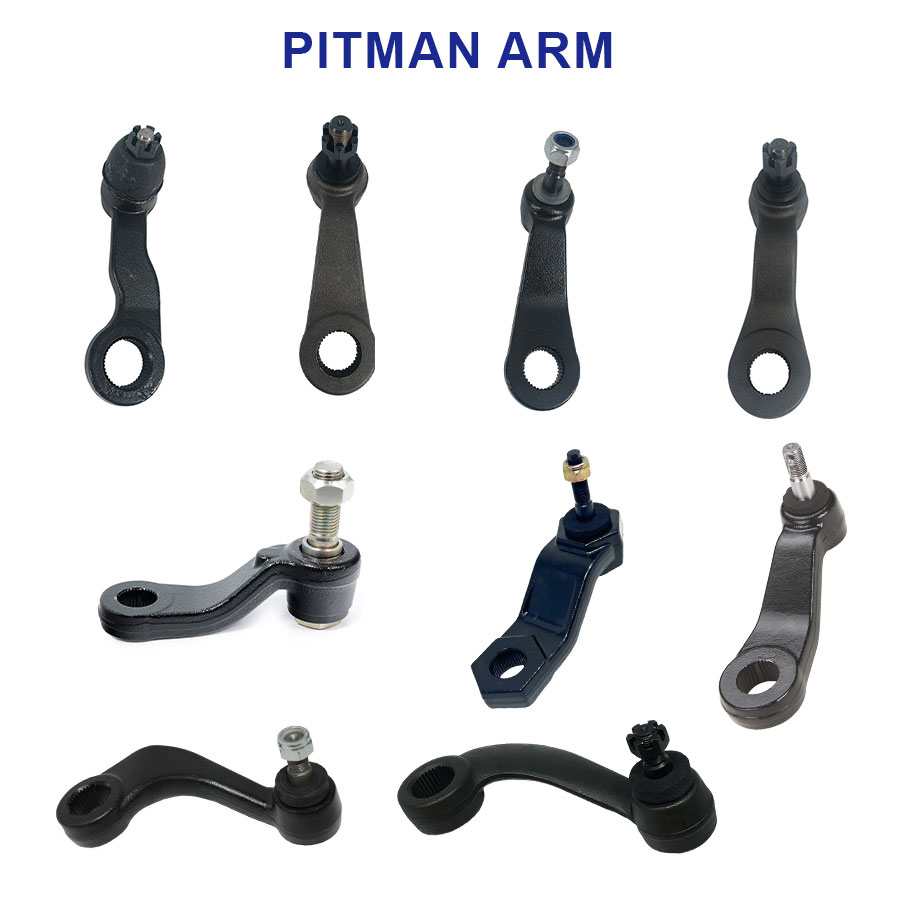As a leading producer of automotive components with more than three decades of professional experience, FENGYU has established itself as a dependable provider of Pitman Arms, delivering accuracy and sturdiness to the worldwide aftermarket. Focusing on vital steering parts, we supply an extensive selection of Pitman Arms compatible with 90% of vehicle makes—covering Japanese brands (Honda, Nissan) and American models (Ford, Dodge, Chevrolet, GMC, Jeep). This positions us as the preferred source for Honda Pitman Arms, Nissan Pitman Arms, Ford Pitman Arms, Dodge Pitman Arms, GMC Pitman Arms, as well as specialized variants such as Ford F-150 Steering Pitman Arms, Chevrolet Silverado Pitman Arms, Honda Ridgeline Pitman Arms, Nissan Titan Steering Pitman Arms, Jeep Wrangler Front Pitman Arms, and Dodge Ram 1500 Pitman Arms.

Built for Toughness: High-Grade Materials & Exact Manufacturing
At FENGYU, every Pitman Arm is designed to serve as the cornerstone of a vehicle’s steering system, starting with superior-grade materials. Our Pitman Arms feature robust forged alloy steel bodies, engineered to handle the strong torque and pressure of steering actions—whether for a Ford F-150 engaged in towing, a Jeep Wrangler tackling off-road terrain, or a Honda Ridgeline used for daily commuting. The key connection points are machined with precise tolerances, enabling seamless integration with the steering linkage and eliminating looseness that leads to unsteady steering.
To boost longevity, each Pitman Arm is treated with a multi-layer anti-rust coating, protecting it from corrosion caused by road salt and moisture. We also equip our Pitman Arms with durable grease fittings (when suitable), allowing for straightforward maintenance to keep the component rotating smoothly—prolonging its service life even in severe weather conditions. Hardware such as mounting bolts is made from high-tensile steel, ensuring a firm fit that won’t come loose over time, whether it’s a Chevrolet Silverado Pitman Arm or a Nissan Titan Steering Pitman Arm.
Customized for Your Business: Flexible OEM/ODM Options
Recognizing the varied needs of aftermarket distributors, wholesalers, and importers, FENGYU provides customizable OEM/ODM services for Pitman Arms to assist you in building your brand. You can select finishes like black oxide (for a tough appearance) or zinc plating (for added anti-corrosion protection), add laser-engraved logos or part numbers for easy brand identification, or choose personalized packaging—from branded colored boxes to custom plastic bags that match your marketing plan.
With a low minimum order quantity (MOQ) of 100 units per model, we make it simple to stock both popular items and specialized options without the burden of heavy inventory. Whether you need to restock Ford Pitman Arms for pickup truck markets or source Jeep Wrangler Front Pitman Arms for off-road enthusiasts, our flexible ordering system ensures you receive exactly what you require. Additionally, our direct-from-factory pricing gives you competitive profit margins, helping you maintain an edge in the aftermarket.
Quality You Can Rely On: Strict Testing & International Certifications
Quality is non-negotiable at FENGYU, and every Pitman Arm goes through rigorous testing to meet or surpass original equipment (OE) standards. We begin with raw material inspections—to confirm the strength and durability of the alloy steel—then conduct in-process checks to ensure dimensional accuracy. Before shipping, each Pitman Arm is tested for torque resistance (to ensure it can handle steering force without bending), rotation smoothness (to avoid stiff steering), and corrosion resistance (to endure harsh environments).
Our dedication to quality is supported by IATF 16949 and ISO 9001 certifications, meaning every FENGYU Pitman Arm—whether a Dodge Ram 1500 Pitman Arm or a GMC Pitman Arm—complies with global quality standards. You can have confidence that our parts will perform as reliably as original components, keeping end-users safe on the road.
Backed by Expertise & Dependable After-Sales Support
We stand behind every Pitman Arm we manufacture with a solid warranty and responsive after-sales service. If you encounter any problems—whether a fit issue with a Honda Ridgeline Pitman Arm or a performance question about a Jeep Wrangler Front Pitman Arm—our team is ready to assist. Simply share photos or videos of the issue, and we will provide prompt solutions, including refunds or replacements in your next order.
With over 30 years of export experience, we understand the importance of timely delivery. Our ready inventory of more than 100,000 Pitman Arms (including best-selling models like Ford F-150 Steering Pitman Arms and Chevrolet Silverado Pitman Arms) ensures fast turnaround for urgent orders, while custom OEM/ODM orders are completed within 30–45 days—keeping your inventory moving and your customers happy.
Partner with FENGYU for Steering Excellence
Whether you need to stock Honda Pitman Arms for sedans, Dodge Ram 1500 Pitman Arms for trucks, or Jeep Wrangler Front Pitman Arms for off-road vehicles, FENGYU combines quality, flexibility, and expertise to support your business. We don’t just supply parts—we build long-term partnerships, offering professional guidance to help you curate a product range that meets the unique needs of your market.
Looking for a trusted Pitman Arm supplier? Get in touch with the FENGYU team today to explore our full range, discuss customization options, and grow your business with parts that keep vehicles steering smoothly and safely.


















